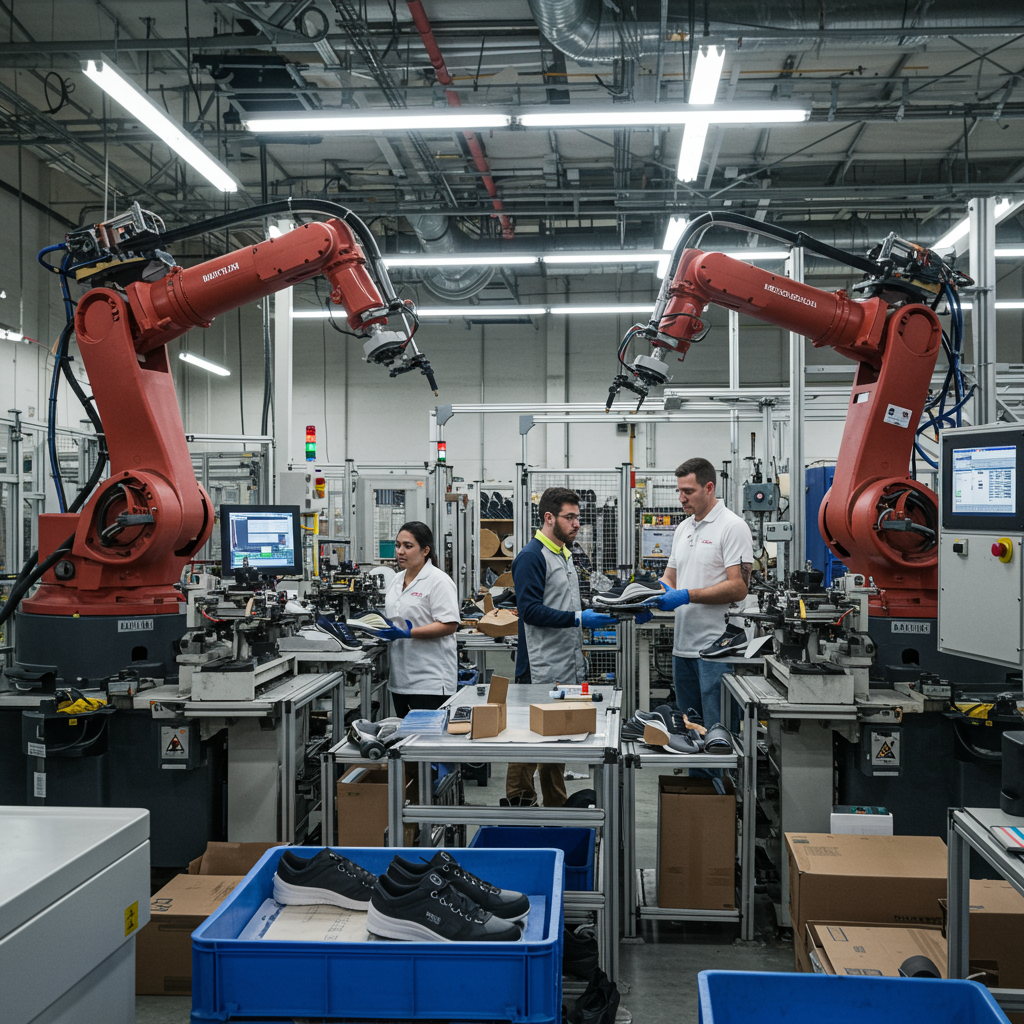Bringing manufacturing back to the United States is a compelling vision, often highlighted in political discussions surrounding “America First” economic goals. But for industries like shoemaking, where global supply chains and significantly lower labor costs overseas have dominated for decades, the reality is far more complex than simply opening a factory door. The question isn’t just can it be done, but how it can be done competitively without relying on cheap labor.
The core challenge is stark: US labor rates are substantially higher than in traditional manufacturing hubs in Asia – roughly 10 to 12 times more expensive, according to industry insiders. This economic reality means that the labor-intensive assembly methods common elsewhere are largely unviable in the United States for mass-market products.
Automation: The New Engine of American Manufacturing
For companies attempting to produce domestically, the path forward increasingly relies on advanced technology. Manufacturing is transforming from a labor-heavy process into a capital-intensive, high-tech enterprise.
Consider companies like Keen, which recently opened a new factory near Louisville, Kentucky. While seemingly an emblem of reshoring, this facility operates with a small team of just 24 employees. Its efficiency hinges on extensive automation – sophisticated robots performing tasks like fusing soles and trimming materials with precision and speed unmatched by human hands. This significant investment in technology is what allows them to produce shoes economically and efficiently in the US, despite high wages.
The strategy involves not just implementing robots, but also integrating product design and material selection to maximize automated processes. This fundamentally changes how shoes are made domestically compared to the manual assembly prevalent overseas.
Navigating the Global Supply Chain Hurdle
Even with cutting-edge automation, domestic manufacturers face another significant challenge: building a reliable, cost-effective supply chain within the US. The vast majority of footwear production, component sourcing, and material suppliers are deeply entrenched in global networks, primarily in Asia. Approximately 99% of shoes sold in the US are imported, leaving an almost non-existent domestic supply chain for parts.
Oka Brands, which produces shoes entirely in Georgia, understands this struggle intimately. Sourcing affordable materials like foam and PVC for soles requires creative, often unconventional, workarounds, like tapping into the automotive industry’s supplier network. As Oka’s CEO notes, it’s not a “self-sustained ecosystem” domestically; companies often have to build their own, which is extremely difficult when vendors are scarce or inconsistent.
The Scale and Complexity of Reshoring
Replicating the efficiency and scale of overseas production in the US is complex and expensive. Attempting to develop new manufacturing technologies domestically has proven challenging, with major brands like Nike and Adidas having made attempts a decade ago that ultimately didn’t succeed in shifting significant production back.
Even pioneers like Keen, despite their investment in automation and a decade-long effort to bring some production home, currently only assemble about 9% of their shoes in the United States. Scaling production in this new, automated model is a significant hurdle.
Beyond Political Rhetoric: The Economic Reality
While political policies like tariffs and events like the pandemic’s supply chain disruptions have spurred renewed interest in domestic manufacturing, the economic reality is nuanced.
Despite political claims touting massive increases in business investment linked to tariffs and other policies – figures that analyses suggest were significantly inflated and included projects planned before policy changes – experts caution that tariffs alone are unlikely to drive a wholesale return of manufacturing. The inherent economic incentives related to lower labor costs and established global networks are powerful.
Some analysts argue that factors like industry consolidation and a shift towards less capital-intensive investments like software play a larger role in overall investment trends than tariffs. While tariffs can act as a catalyst for some industries to consider domestic production (like certain high-value pharmaceutical manufacturing), the uncertainty they create can also deter long-term investment.
Furthermore, while tariffs aim to make imports less competitive, their impact on consumer prices has been mixed so far. Early data showed a muted overall effect on inflation, though prices in specific import-heavy categories like appliances and toys did see notable jumps. Economists caution that the full inflationary effect of tariffs may still take months to appear as companies cycle through existing inventories.
Patient Investment and the Future
For companies committed to manufacturing in America, like Keen, success requires patient, long-term investment, often enabled by factors beyond typical quarterly financial pressures (Keen, being family-owned and values-led, highlights this). Building the necessary infrastructure, supply chains, and expertise takes time and significant capital.
The story of American manufacturing isn’t one of simply reversing decades of globalization to return to a past model. Instead, companies like Keen and Oka Brands offer a glimpse into the future: a high-tech, highly automated approach where technology and tradition intersect. Making shoes economically in the US in the modern era hinges on leveraging automation, integrating innovative design and materials, patiently building components of a domestic supply chain, and making strategic, long-term investments – a reality far removed from relying on inexpensive labor.




